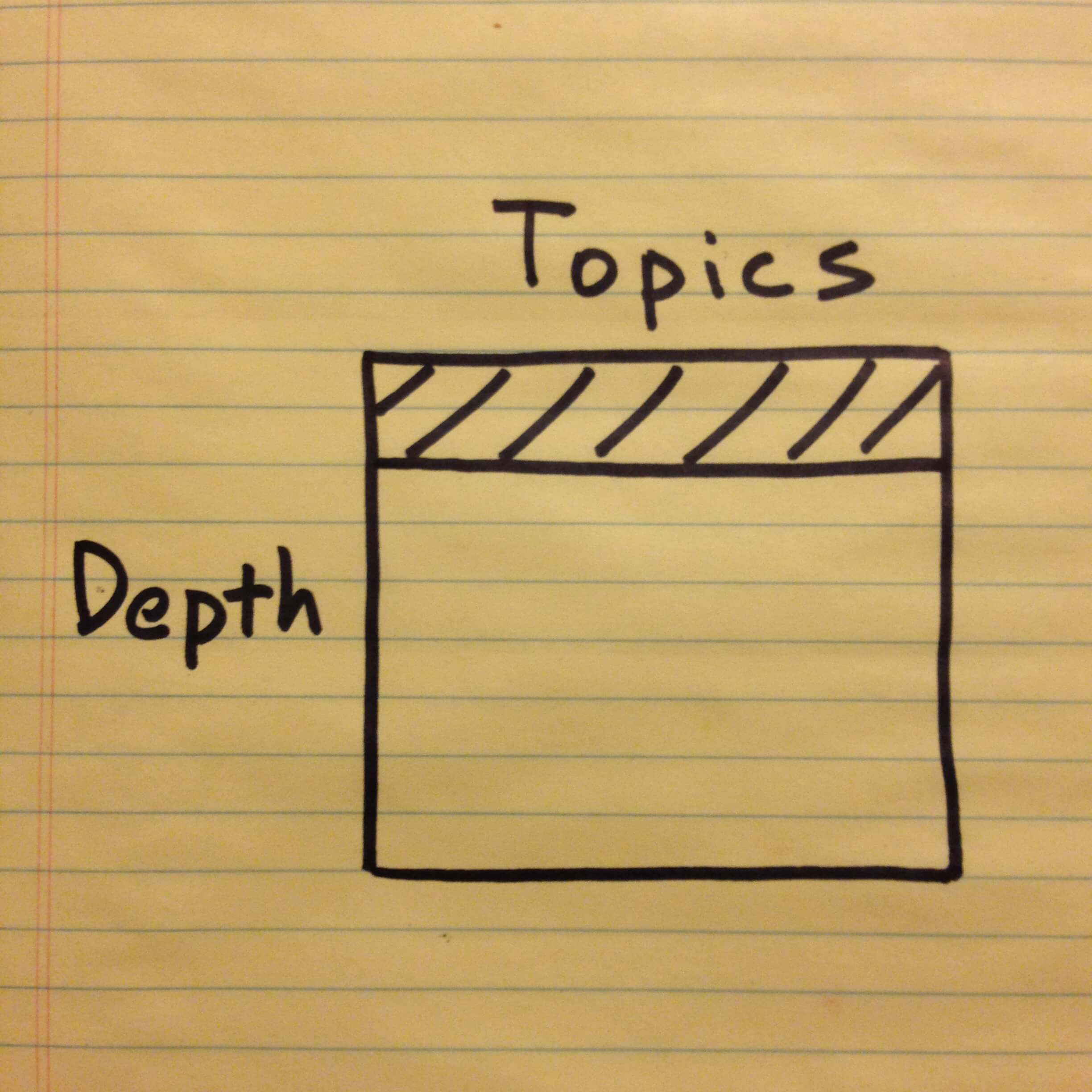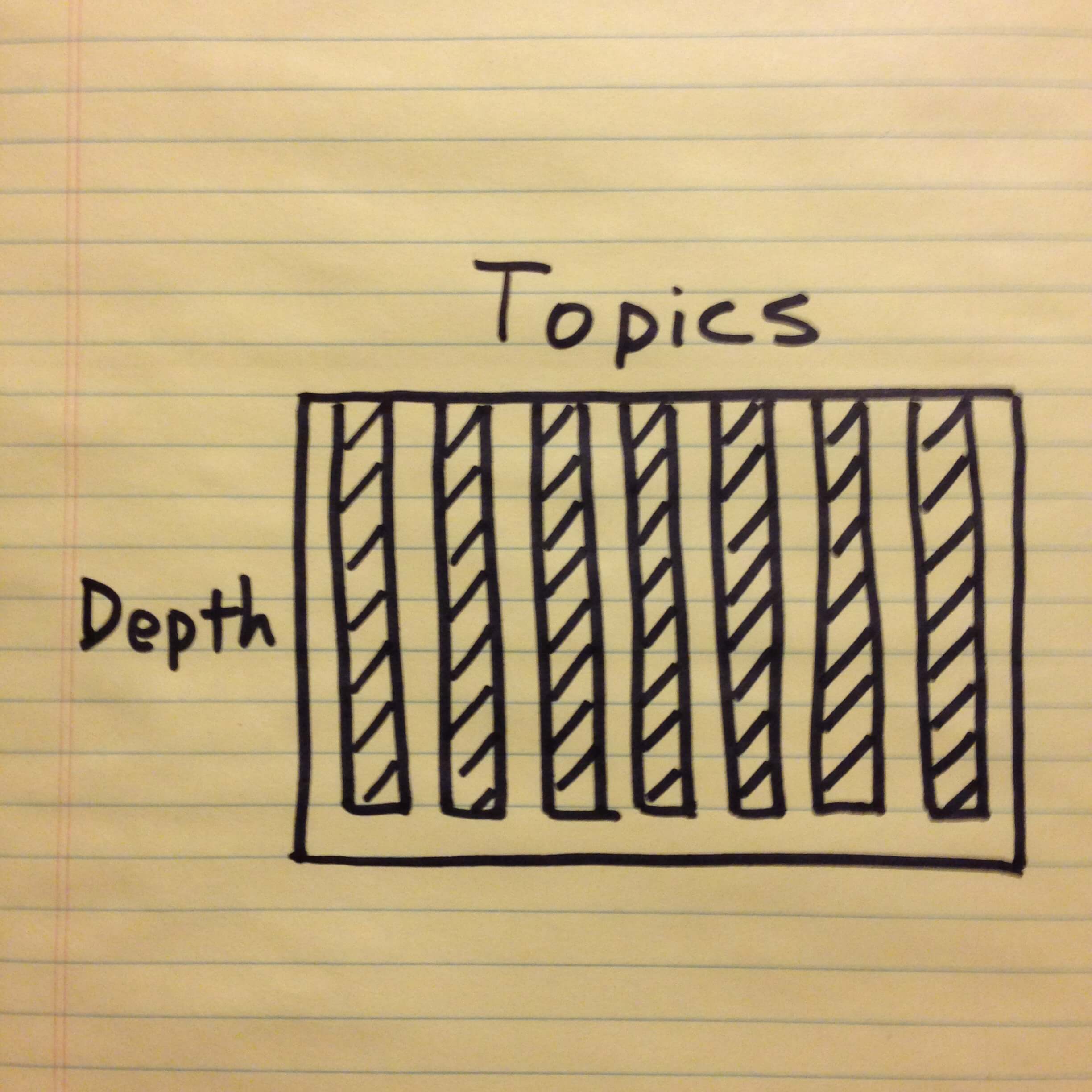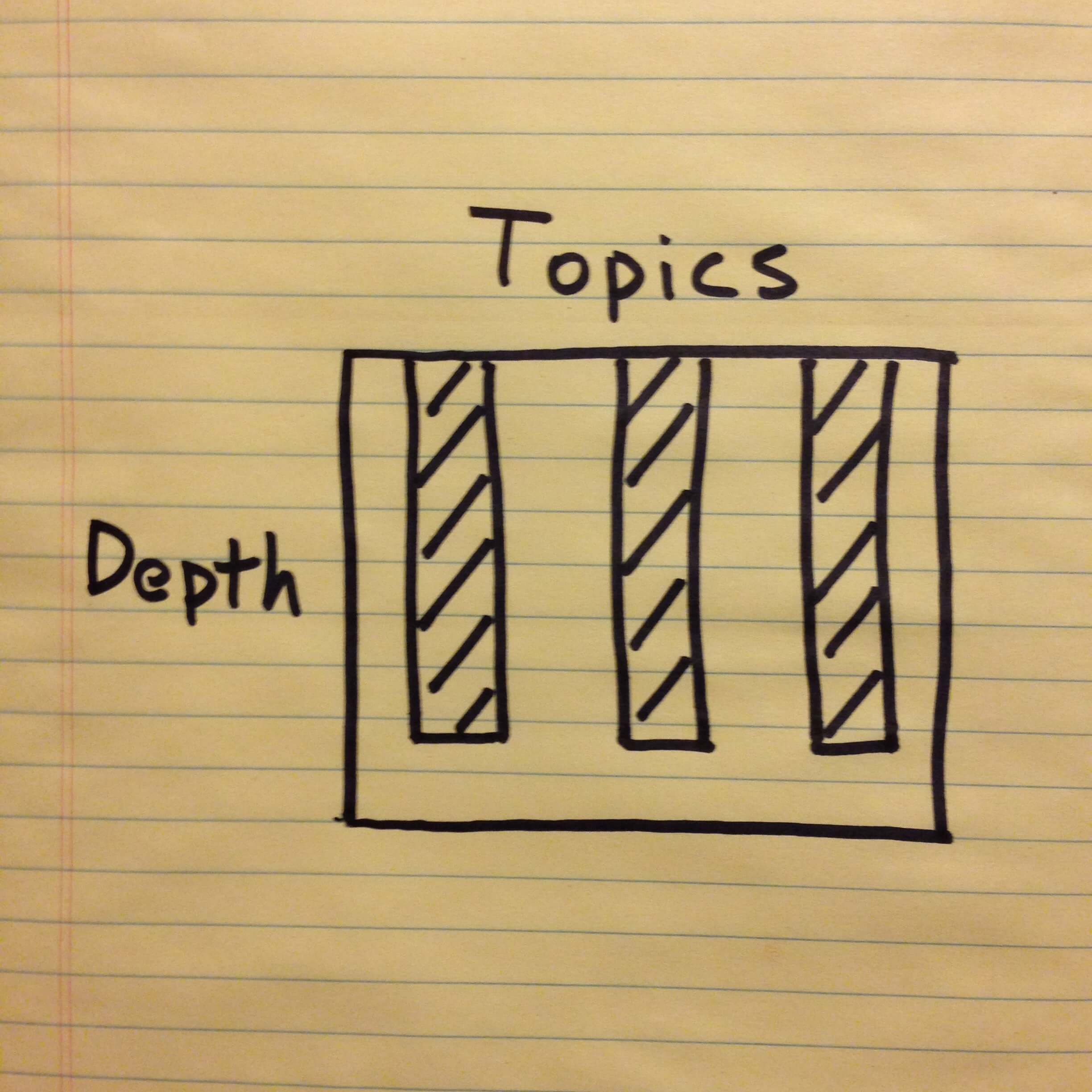Try the “Deep Sample” Instead of the “Shallow Survey”
In Part 2 of my series on public speaking, I explained how to make your tone engaging. But how do you make your content engaging?
Let’s use an example. If you’re a lawyer, you have probably seen presentations on the duty to preserve electronically stored information (ESI) for litigation. If you’re not a lawyer, count yourself lucky.
ESI was a hot topic in legal circles—until lawyers got sick of it. But it is still an important topic, because failing to preserve ESI can result in sanctions for “spoliation” of evidence, and that is a trial lawyer’s nightmare.
So let’s say you are assigned to talk about preservation of ESI for 45 minutes. How would you make your content engaging?
Substance vs. Fluff
First, you want to strike the right balance between substance and fluff. People often complain that seminar speakers sound like they are just reading their papers. You could easily give a 45-minute summary of the facts and legal holdings in five key cases on spoliation of evidence. This might be engaging if everyone in your audience is fascinated by spoliation law, but for most people that would be too much substance.
Or you could spend 45 minutes talking about your law practice, how e-discovery has taken all the fun out of litigation, and why preservation of ESI is really important. Tell a few war stories, show some cartoons about e-discovery, and maybe throw in a photo of Hillary Clinton with a caption about deleting emails. If you are actually funny (see Part 1), you might hold the audience’s attention, but they will leave the presentation feeling like there was too much fluff, not enough substance.
The best presentations expertly manage to entertain and inform at the same time. Most of us are just chasing this ideal, but once in a while you will run across someone who does this just right. Take a lesson from that person and strive for the right balance of substance and fluff. Cover some key points of spoliation law, but illustrate them with memorable stories.
The “Deep Sample” vs. the “Shallow Survey.”
Selecting the topics to cover and the amount of detail to devote to each topic is critical to making your content engaging. Many speakers go wrong by trying to cover too many topics and covering each one with either too much or too little detail.
For simplicity, let’s assume that the subject of preserving ESI consists of these topics:
- The Zubulake cases
- Other notable spoliation cases
- Key Texas cases on spoliation
- Federal rules on spoliation sanctions
- How to issue a litigation hold
- Technical issues with preserving ESI
- Ethical issues concerning spoliation of evidence
Given 45 minutes, many speakers would try to cover all seven topics, devoting about six minutes to each topic. The result would be a relatively shallow treatment of each topic, the “Shallow Survey.” Graphically, it looks like this:
Here’s the problem with the Shallow Survey: Unless the subject is totally new to your audience, they probably won’t learn much they didn’t already know.
On the other hand, some of you may share with me an almost obsessive compulsion to be comprehensive and detailed when covering a topic. You try to pack a treatise into a 45-minute presentation. I call this the “Attempted Comprehensive Survey.” Graphically the plan looks like this:
The problem, of course, is that you are going to run out of time. That’s why I call it “Attempted.” You feel rushed and get stressed. When an audience member asks an interesting question, you brush it aside so you can get back to your 75 bullet points. When the moderator holds up a sign that says “5 minutes left,” you’re not even half way through.
Instead of doing the Shallow Survey or the Attempted Comprehensive Survey, try the “Deep Sample.” It looks like this:
Pick three of the seven topics you find most interesting, and cover them with enough detail that you are teaching the audience something they didn’t know. (TexasBarCLE gives similar advice in this helpful video.) Then you can relax and cover each point as fully as you want. You might even have time to interact with the audience (more on this coming in Part 5). Don’t worry about the points you didn’t cover, especially if they are in your paper.
By the way, the Deep Sample can also work in the courtroom (more on this coming in Part 4).
Concrete vs. Abstract
There is a danger in making a presentation too concrete. For example, in spoliation law there is a seminal series of cases called Zubulake. If you want to impress your date at a cocktail party, just say stuff like “yeah, Judge Scheindlin got it right in Zubulake IV, but she just took it too far in Zubulake V.”
Anyway, if I spent 45 minutes explaining the facts, holdings, and reasoning of the Zubulake cases, it would certainly be concrete. But it would be missing something critical: general lessons.
You need to connect the dots and tell your audience the key “takeaways” from the presentation. Try to boil this down to three or four important things to remember. These lessons will necessarily be abstract, but that’s the point. Imagine someone in your audience goes back to his office and is asked, “so what did you learn from that presentation?” If he struggles to know what to say, you didn’t do your job.
On the other hand, the danger of making a presentation too abstract is obvious. It’s hard to learn from pure generalities. This is the very reason law schools typically use the case method: studying cases that show the development and application of general legal principles, rather than just reading treatises that summarize the general principles.
Imagine a presentation on spoliation law that consisted of reading the applicable rules of civil procedure. Not very engaging. It would be like trying to learn contract law by simply reading the Uniform Commercial Code. Truly understanding the general principles is difficult without names, facts, and stories.
Instead, find a way to make your key points concrete (again, TexasBarCLE has a nice video making the same point). There are many effective ways to do this. If you’re speaking on the duty to preserve ESI, you could use Zubulake as a case study, going over the specific facts and then drawing out the general principles. Or you could pose a series of hypothetical questions about ESI issues, with multiple choice questions for the audience to focus their attention.
Or, if you are writing a blog post about public speaking, you could make your points more concrete by using a specific example, like giving a presentation on the duty to preserve ESI.
See what I did there?
________________________
Zach Wolfe (zach@zachwolfelaw.com) is a Texas trial lawyer who handles non-compete and trade secret litigation at Zach Wolfe Law Firm (zachwolfelaw.com). Thomson Reuters named him a Texas Super Lawyer® for Business Litigation in 2020, 2021, and 2022. His graphics designer had the week off.
These are his opinions, not the opinions of his firm or clients, so don’t cite part of this post against him in an actual case. Every case is different, so don’t rely on this post as legal advice for your case. You can, however, rely on it as public speaking advice.









Comments:
These are genuinely enormous ideas in about blogging. You have touched some nice factors here. Any way keep up writing. Well done!